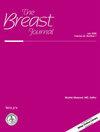在COVID-19时代寻求门诊乳房切除术:障碍和促进因素
IF 1.9
4区 医学
Q3 OBSTETRICS & GYNECOLOGY
引用次数: 2
摘要
背景:住院乳房切除术的比率仍然很高,尽管多项研究报道了门诊乳房切除术的优势。门诊乳房切除术不影响患者护理质量,比住院护理更有效。本研究的目的是评估门诊乳房切除术的可行性。材料和方法在一项回顾性研究中评估门诊乳房切除术方案的实施情况。所有在2019年1月至2021年9月期间接受乳房切除术的患者都被纳入其中。结果213例患者纳入研究:62.4% (n = 133)为门诊乳房切除术,37.6% (n = 80)为住院乳房切除术。随着时间的推移,观察到门诊乳房切除术稳步上升。2020年第二季度,恰逢第一次COVID-19浪潮,门诊乳房切除术达到高峰。唯一的显著障碍门诊乳房切除术证明是双侧乳房切除术。27.8%的门诊患者和36.3%的住院乳房切除术患者出现计划外重返护理(P=0.198);两组患者意外返回护理的原因相似。结论门诊乳房切除术是可行和安全的,在研究期间乳房切除术稳步增加。双侧乳房切除术是门诊乳房切除术的障碍。门诊组和住院组的意外复诊或并发症发生率无显著差异。本文章由计算机程序翻译,如有差异,请以英文原文为准。
The Quest for Outpatient Mastectomy in COVID-19 Era: Barriers and Facilitators
Background The rate of inpatient mastectomies remains high despite multiple studies reporting favourably on outpatient mastectomies. Outpatient mastectomies do not compromise quality of patient care and are more efficient than inpatient care. The objective of this study was to evaluate the feasibility of outpatient mastectomy. Materials and Methods Implementation of an outpatient mastectomy program was evaluated in a retrospective study. All patients who underwent mastectomy between January 2019 and September 2021 were included. Results 213 patients were enrolled in the study: 62.4% (n = 133) outpatient mastectomies versus 37.6% (n = 80) inpatient mastectomies. A steady rise in outpatient mastectomies was observed over time. The second quarter of 2020, coinciding with the first COVID-19 wave, showed a peak in outpatient mastectomies. The only significant barrier to outpatient mastectomy proved to be bilateral mastectomy. Unplanned return to care was observed in 27.8% of the outpatient versus 36.3% of the inpatient mastectomies (P=0.198); the reason for unplanned return of care was similar in both groups. Conclusions Outpatient mastectomy is shown to be feasible and safe with a steady increase during the study period. A barrier to outpatient mastectomy was bilateral mastectomy. Incidence of unplanned return to care or complications did not differ significantly between the outpatient and inpatient cohorts.
求助全文
通过发布文献求助,成功后即可免费获取论文全文。
去求助
来源期刊

Breast Journal
医学-妇产科学
CiteScore
4.00
自引率
0.00%
发文量
47
审稿时长
4-8 weeks
期刊介绍:
The Breast Journal is the first comprehensive, multidisciplinary source devoted exclusively to all facets of research, diagnosis, and treatment of breast disease. The Breast Journal encompasses the latest news and technologies from the many medical specialties concerned with breast disease care in order to address the disease within the context of an integrated breast health care. This editorial philosophy recognizes the special social, sexual, and psychological considerations that distinguish cancer, and breast cancer in particular, from other serious diseases. Topics specifically within the scope of The Breast Journal include:
Risk Factors
Prevention
Early Detection
Diagnosis and Therapy
Psychological Issues
Quality of Life
Biology of Breast Cancer.
 求助内容:
求助内容: 应助结果提醒方式:
应助结果提醒方式:


